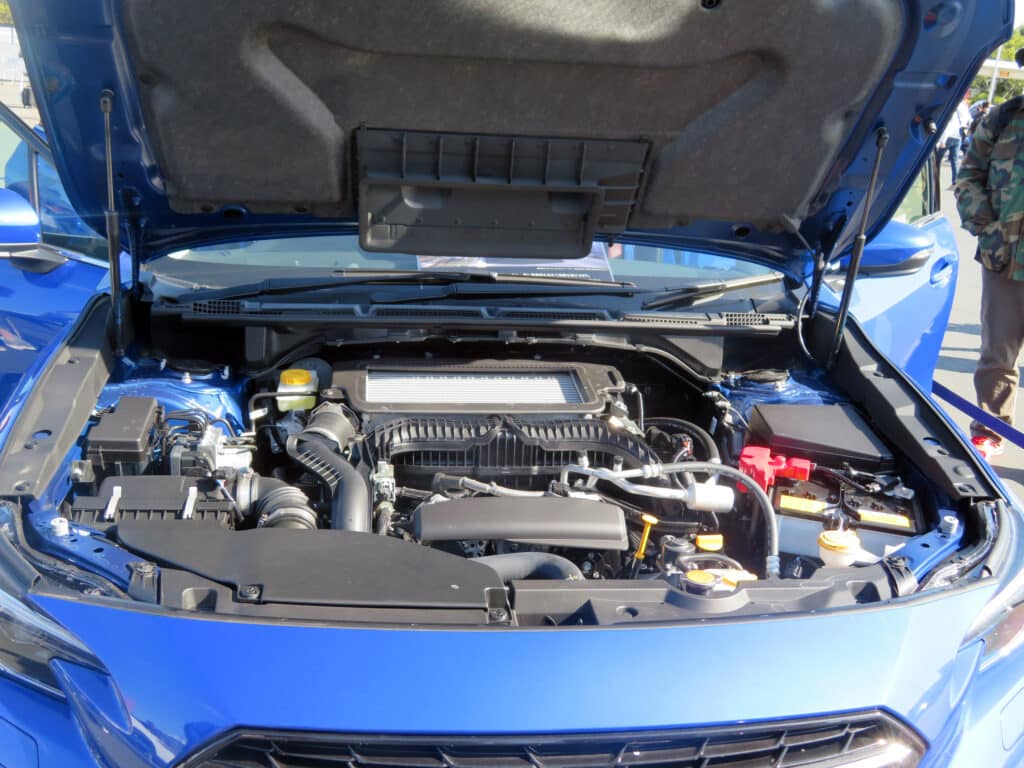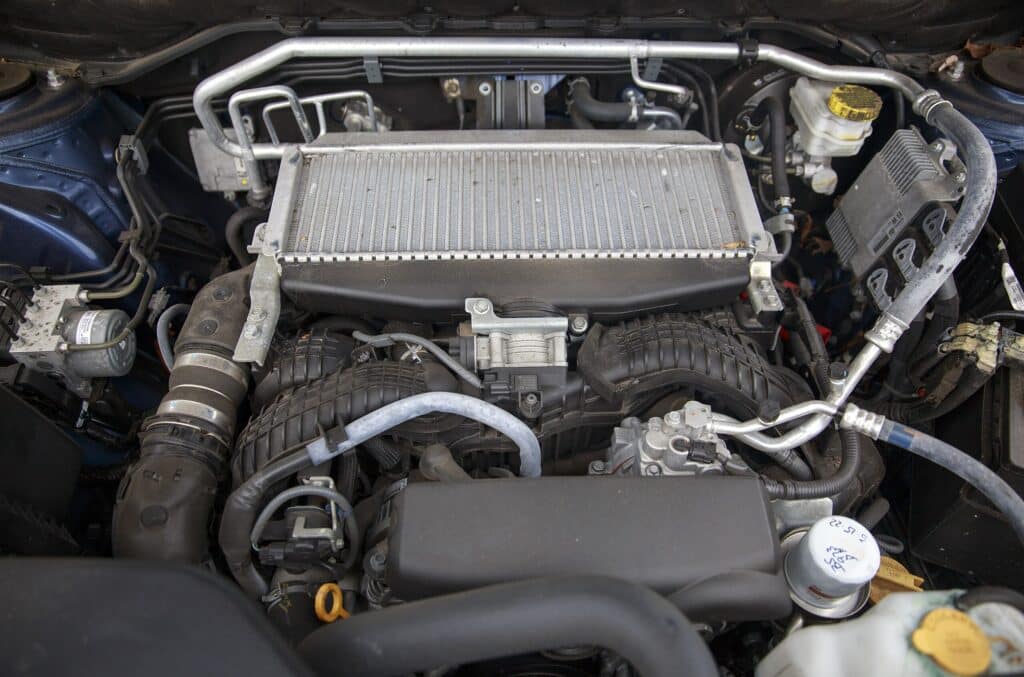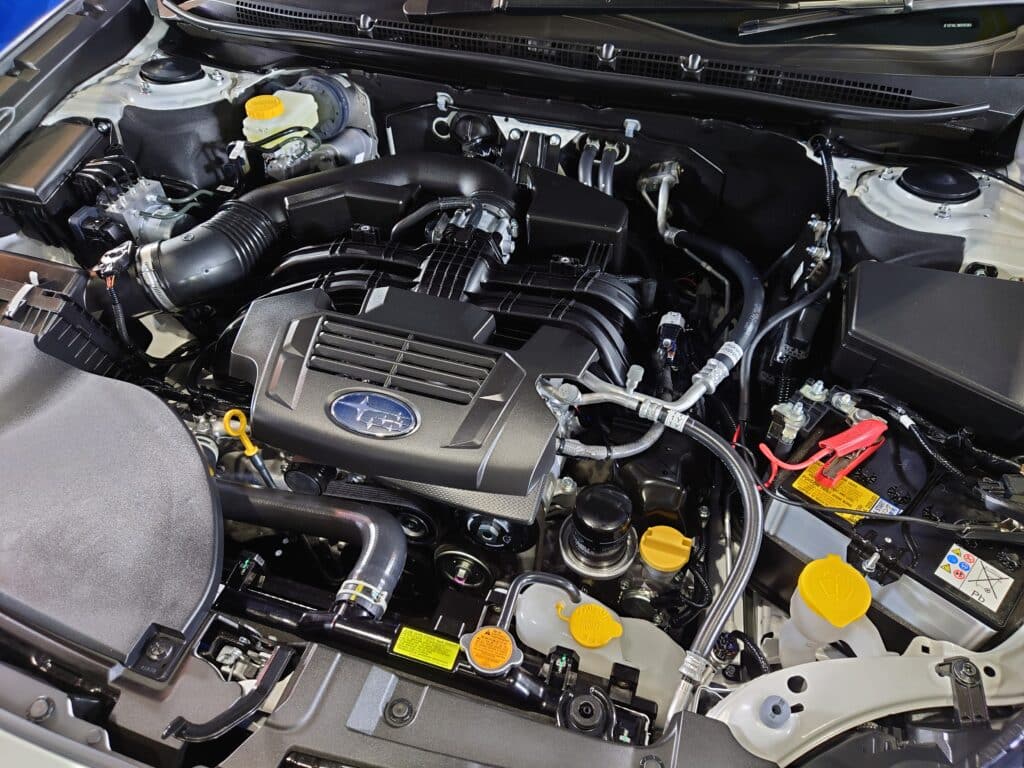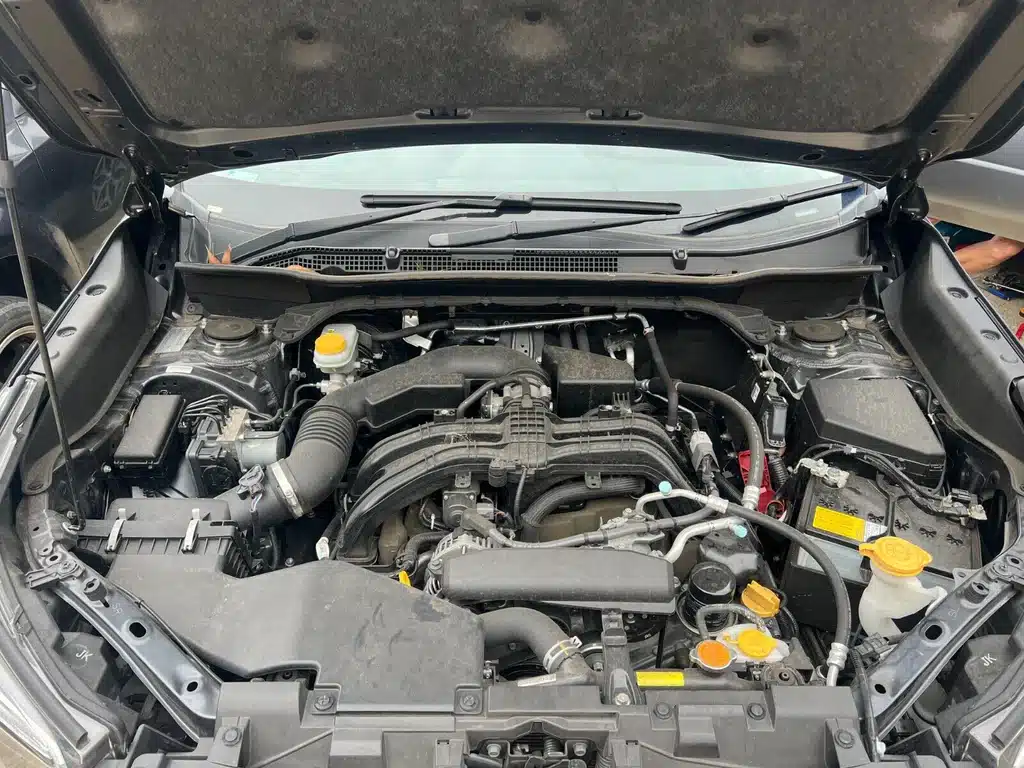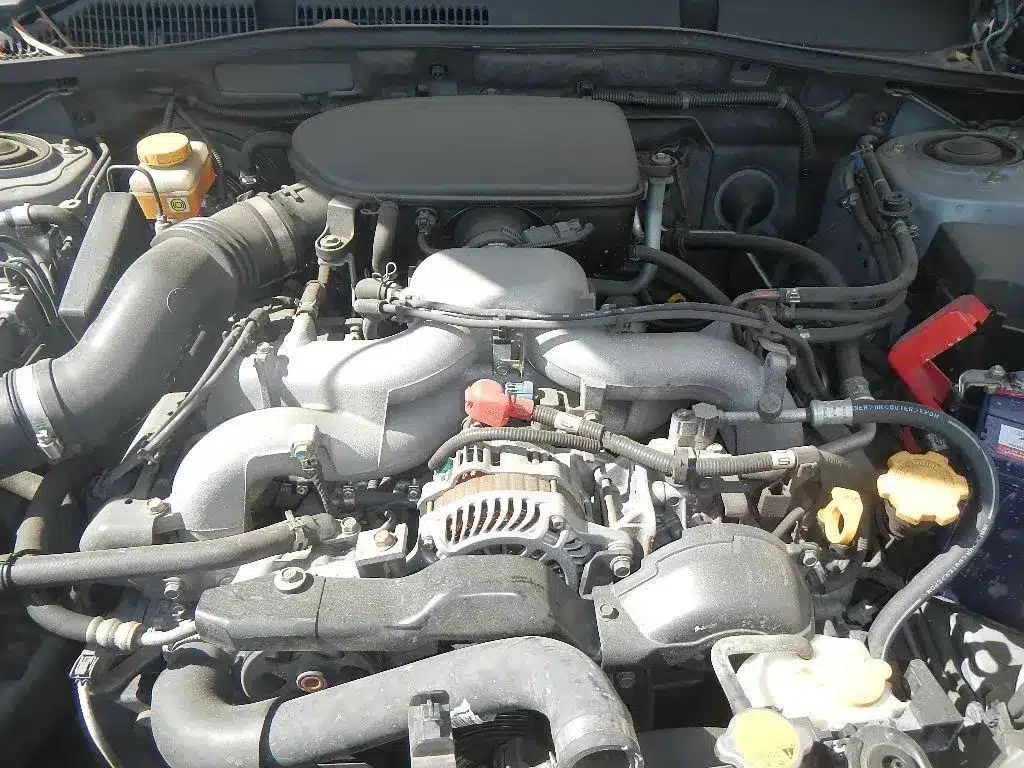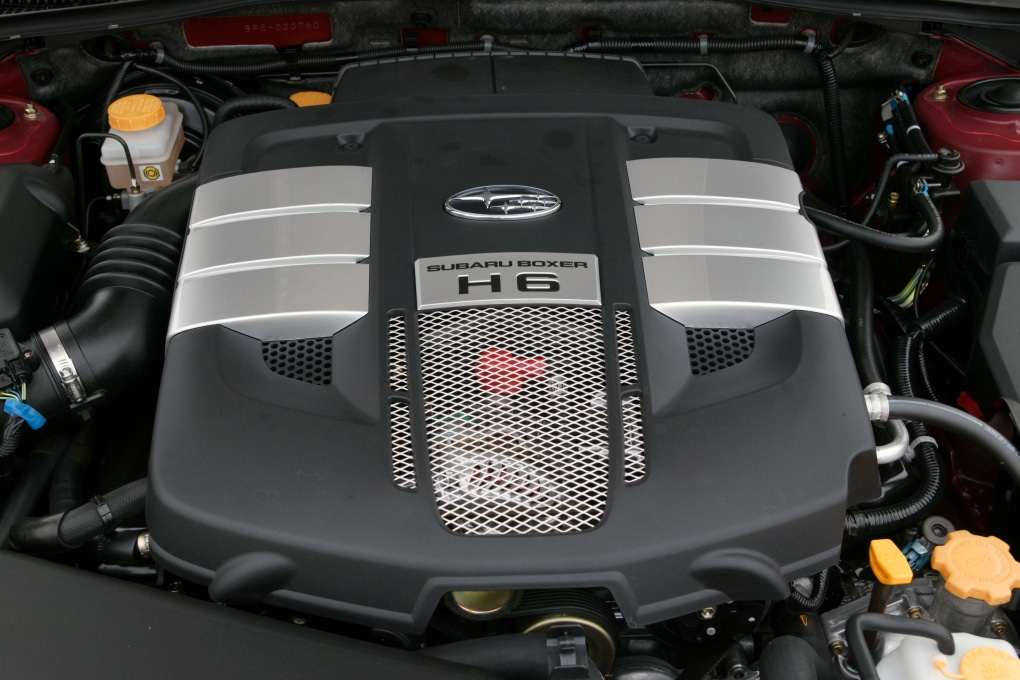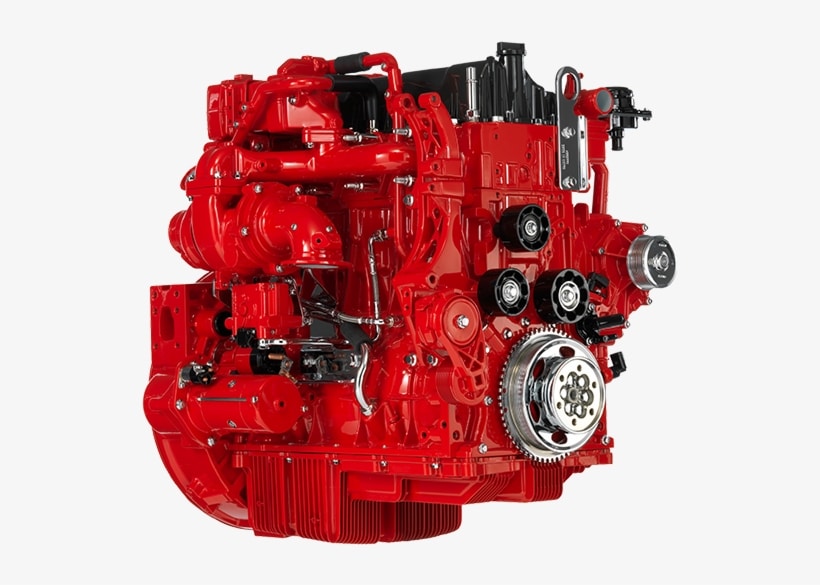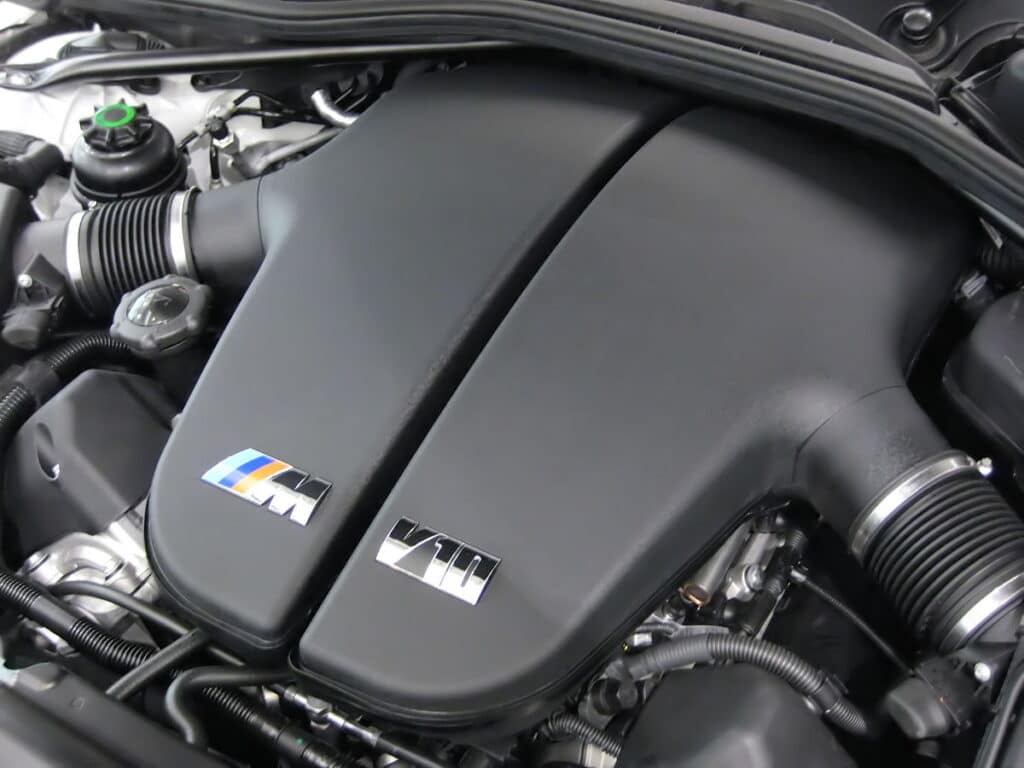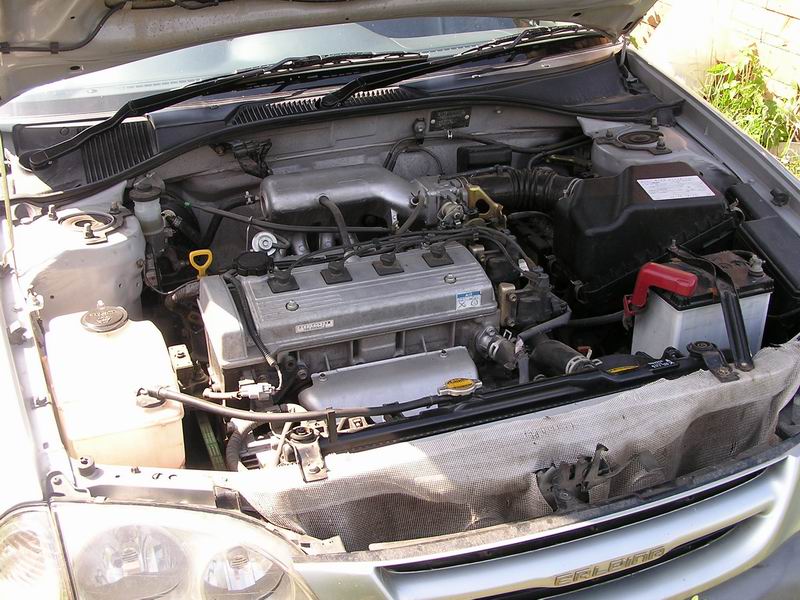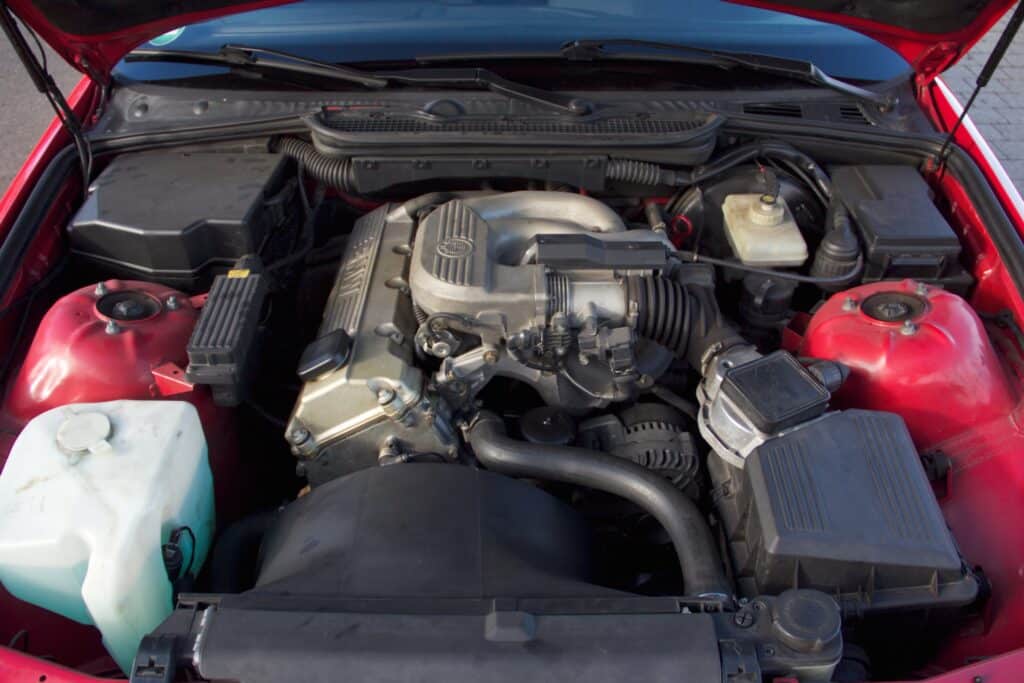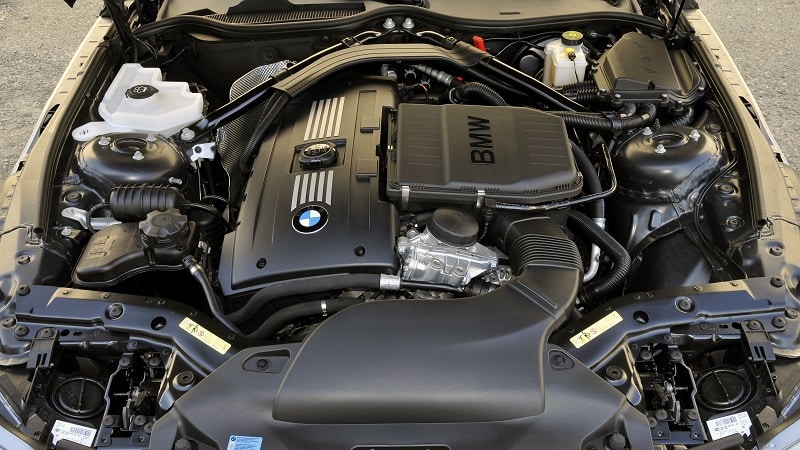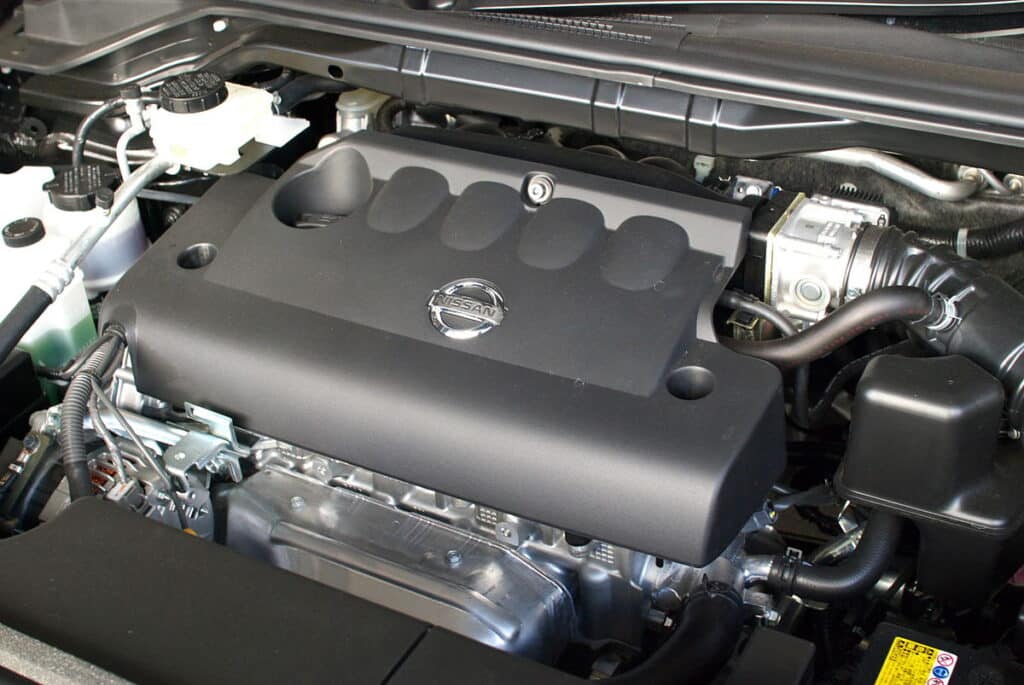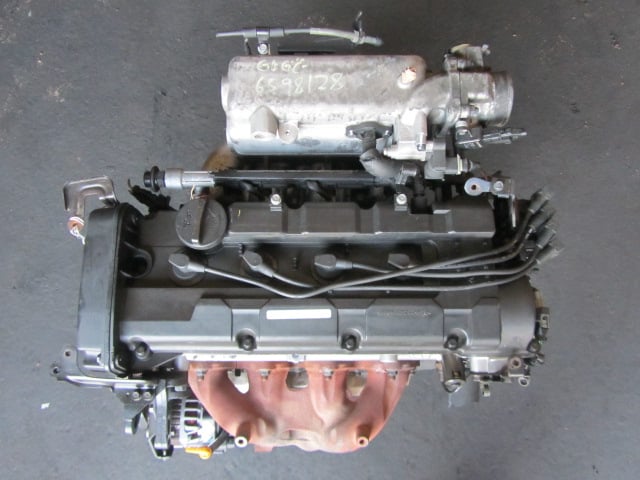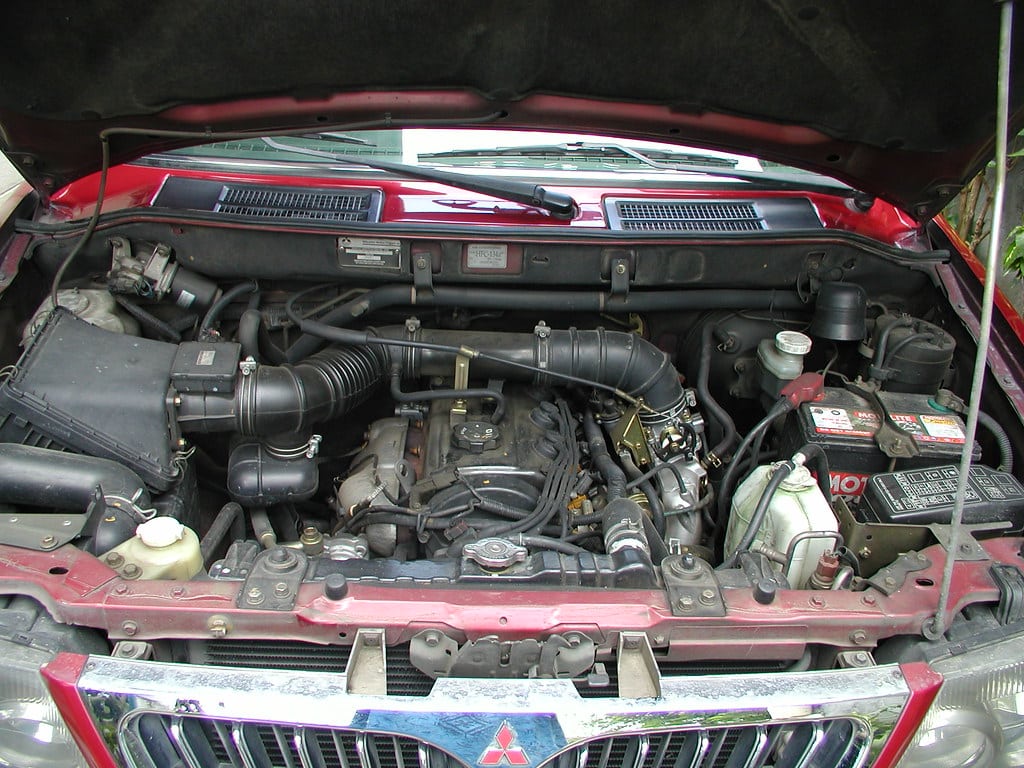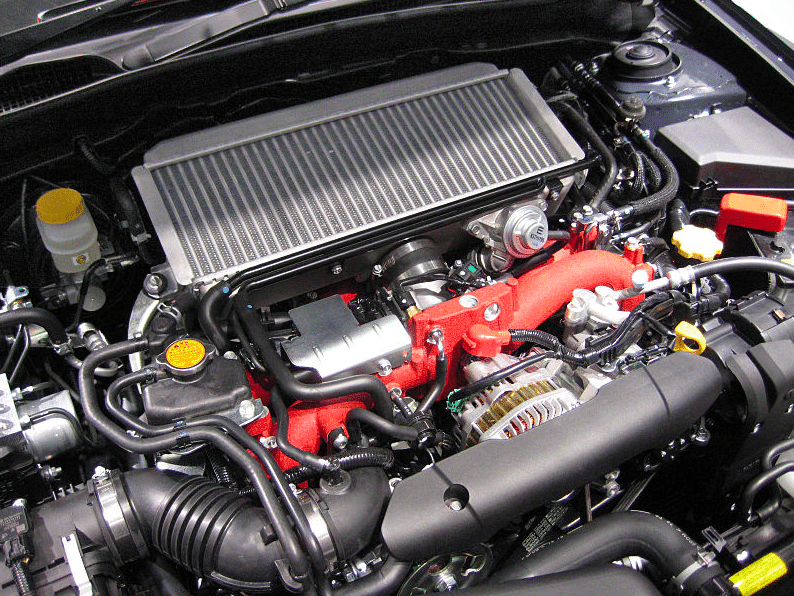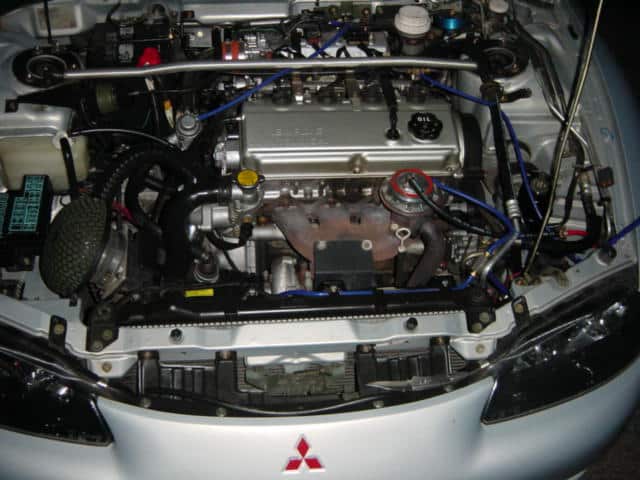As a seasoned automotive enthusiast and writer, I’ve had the opportunity to delve into the intricacies of various engines, and the Subaru EJ25 engine holds a particular significance in the realm of high-performance powertrains. Widely acclaimed for its distinctive boxer configuration, the EJ25 renders an unparalleled balance of performance and reliability for models like the Legacy, Forester, Impreza, and the adrenaline-pumping WRX STI. Unfolding the tale of the Subaru EJ25 engine is not just about unraveling its specs; it’s about understanding its journey from a robust foundation to becoming synonymous with durability.
Throughout my professional journey, I’ve encountered Subaru EJ25 engines, and each encounter affirmed their demand in the market. Whether it’s enthusiasts seeking an iconic engine rebuild or drivers depending on the raw power of a naturally aspirated or turbocharged EJ25, this engine’s capabilities speak volumes.
However, the journey is not devoid of hiccups; EJ25 engine problems are a reality, often remedied by a committed approach to maintenance and strategic upgrades. Strapping in for an expedition into the world of the EJ25, my mission is to shed light on what makes this machine tick, its quirks, and how to keep it in formidable shape.
Key Takeaways
- The Subaru EJ25 engine specs feature a 2.5-liter boxer configuration, contributing to vehicle stability and performance.
- Known for its application in performance-oriented models, the EJ25 enjoys a stalwart reputation for reliability with proper care.
- Common Subaru EJ25 engine problems include head gasket failures and ringland issues, which are addressable with preventative maintenance.
- The availability of the Subaru EJ25 engine for sale allows for eager gearheads and DIY enthusiasts to procure this substantial powertrain for their project cars.
- A strategic Subaru EJ25 engine rebuild can revamp the engine’s vitality and enhance its capabilities to meet modern performance standards.
- Improved durability and peak performance of the EJ25 are achievable with a disciplined maintenance schedule and thoughtful upgrades.
Understanding the Subaru EJ25 Engine Specifications and Variants
Regarding the Subaru EJ25 engine, one of its most noted features is the boxer layout, which provides a unique rumble, contributes to a lower center of gravity, and enhances stability for models like the Subaru Impreza. My experience with this engine spans across different variants, each offering its distinct EJ25 engine specs conducive to Subaru’s reputation for reliability and performance.
The EJ25’s journey began with the EJ25D, setting a robust foundation with a DOHC design and a capacity of 2.5 liters. As my familiarity with the engine extends, I’ve come to appreciate its adaptability across several Subaru models, proving its versatility and enduring appeal.
Below is a detailed breakdown of the EJ25 engine’s specs and the significance of its various iterations in models like the Forester, Legacy, Outback, Baja, and the performance-geared Impreza WRX STI.
| Specification | Details |
|---|---|
| Engine Code | EJ25D, EJ251, EJ252, EJ253, EJ254, EJ255, EJ257 |
| Layout | Boxer 4 cylinder SOHC/DOHC 16V |
| Displacement | 2.5 liter (2,457 cc) |
| Fuel System | Electronic Fuel Injection/Sequential Multi-point FI |
| Cylinder Bore & Stroke | 99.5 mm x 79 mm |
| Compression Ratio | 9.5:1 to 10:1 Naturally Aspirated, 8.0:1 to 9.5:1 Turbocharged |
| Power Output | 155 hp to 341 hp |
| Torque | 140 lb-ft to 330 lb-ft |
| Firing Order | 1-3-2-4 |
| Timing Mechanism | Belt Driven Camshafts |
In my research and hands-on experience, I’ve noted that the Subaru EJ25 engine performance is deeply rooted in the specs it upholds. The engine’s displacement balances efficiency and power, while the various compression ratios cater to distinct models’ naturally aspirated and turbocharged needs.
Specifically, these specs translate into responsive acceleration and a reliable daily driving experience in a vehicle like the Subaru Impreza.
One detail that Subaru enthusiasts often inquire about is whether the Subaru EJ25 has a timing chain or a belt. From my meticulous examinations, I can confirm that the EJ25 utilizes a belt-driven camshaft timing system. This characteristic engages a particular maintenance schedule to prevent premature wear and potential engine damage.
Furthermore, the proper EJ25 spark plugs gap is essential for the efficient functioning of the engine. Subaru has historically used platinum spark plugs for some versions of the EJ25 to extend service life and optimize combustion.
Each iteration of the Subaru EJ25 engine builds upon the last, enhancing performance and efficiency while maintaining the exceptional balance and reliability that Subaru owners expect from their vehicles.
To sum up, understanding the specifications and complexities of the EJ25 engines not only equips Subaru enthusiasts with the knowledge to cherish and maintain their vehicles but also empowers them to make informed decisions when it comes to performance upgrades or identifying a quality EJ25 engine Subaru Impreza, should a replacement or rebuild become necessary.
Subaru EJ25 Engine Oil Capacity
The Subaru EJ25 engine requires 4.4 quarts of 0W-30 oil with a filter replacement.
Subaru WRX STI 2003 Engine Sound
What Cars Have An EJ25 Engine?
- Subaru Impreza (WRX/STI)
- Subaru Forester
- Subaru Legacy/Outback
- Subaru Baja
- SAAB 9-2X
Keeping Your EJ25 Running: Maintenance Tips and Upgrades for Reliability
Maintaining the Subaru EJ25 engine requires a mix of vigilance and proactive measures to ensure longevity and reliability. Throughout my time as an automotive journalist, I’ve discovered that Subaru EJ25 engine maintenance is non-negotiable for owners who wish to enjoy consistent performance and avoid the common pitfalls associated with this robust but sometimes temperamental powerplant. As with any relationship, the bond between a Subaru owner and their EJ25 engine grows stronger with regular care and attention.
Preventative Maintenance Strategies for Longevity
As a guiding principle, following Subaru’s recommended maintenance schedule is fundamental to protecting the EJ25 engine. Over the years, I’ve noted that timely oil changes, typically every 6,000 miles or six months, are a simple yet effective method to maintain engine integrity.
However, due to the known issues of Subaru EJ25 engine problems such as oil consumption, I advise shorter intervals—every 4,000 miles or four months for oil changes.
Preventative maintenance is the lifeblood of the EJ25 engine’s longevity; neglect it, and you’re setting yourself up for a heartbreak.
- Timing Belt: Is Subaru EJ25 an interference engine? Yes, it is. This characteristic heightens the importance of diligent timing belt monitoring and replacement—every 105,000 miles—to prevent catastrophic engine damage.
- Spark Plug Replacement: Keeping up with spark plug replacements every 60,000 miles ensures that the EJ25 engine maintains its efficient ignition and overall performance.
- Inspection of Critical Components: Regularly inspecting the state of the ej25 engine head gasket, water pump, and other vital parts can catch issues before they escalate. Early detection and resolution are key.
Performance Upgrades for the EJ25 Engine
In my tenure, Subaru EJ25 engine upgrade discussions often lead to increased power and enhanced reliability. Investments such as high-quality air-oil separators and robust oil pickup tubes prove prudent, thwarting common issues like ringland failures and oil starvation. When combined, a COBB SF intake system and ECU re-tune champion significantly improved throttle response.
| Upgrade | Benefits |
|---|---|
| Air-Oil Separator | Reduces oil contamination of the intake, mitigating ringland failure risks |
| Upgraded Oil Pickup Tube | Prevents oil starvation, ensuring consistent lubrication |
| Timing Belt Kit | Preserves critical engine timing, averting interference engine damage |
| High-Performance Exhaust System | Augments power output, fuel efficiency, and engine tone |
A wise maneuver I’ve consistently endorsed is the Subaru EJ25 engine rebuild for those looking to restore or boost engine performance. This intricate process not only breathes new life into aging engines but also provides an opportunity to incorporate upgrades that fortify the engine against future issues.
Spotting and Solving Common EJ25 Engine Problems
Knowledge is power, and recognizing Subaru EJ25 engine problems early on empowers owners to take swift action. Watch for telltale signs of head gasket issues like loss of coolant and white exhaust smoke. Listen for the knocking of pending ringland failures, and keep an eye on oil levels to address consumption concerns promptly.
- Head Gasket: An ej25 engine head gasket replacement can resolve the common leakage, preventing extensive damage and ensuring engine health.
- Timing Belt: The significance of a timely ej25 timing belt replacement cannot be overstated; prevention here truly is worth a pound of cure.
- Routine Checks: Regularly scheduled inspections enable the early spotting and resolution of issues, maintaining the engine’s endurance.
Understanding and addressing these quirks solidifies my rapport with this engine and aligns with the Subaru community’s collective experience, enhancing the shared narrative of the EJ25’s resilience.
Navigating the Road Ahead: The Future of EJ25 Ownership
Embarking on the journey of owning a Subaru EJ25 engine is not just about possessing a remarkable piece of machinery; it’s about becoming part of a storied tradition. Known for its distinctive, resonant rumble and impressive horsepower, the EJ25 is a paragon of durability and high performance in the automotive world. My personal experience with this engine has been nothing short of extraordinary.
Celebrating milestones like surpassing 200,000 miles on some of these engines is a testament to their exceptional longevity and resilience.
However, inheriting this legacy is not without its responsibilities. To ensure the continued excellence of the EJ25, it is crucial to commit to a regimen of proactive maintenance. This involves regular check-ups, timely repairs, and vigilance of the engine’s needs.
Furthermore, keeping up with the latest advancements and opting for regular upgrades is pivotal in enhancing its performance and extending its lifespan.
This commitment not only maintains the engine’s robustness but also ensures that the legacy of the EJ25 continues to thrive and inspire Subaru enthusiasts for generations to come. The seasoned Subaru owner knows well that an EJ25 engine for sale brings more than just an engine—it brings a heritage. That’s why informed decisions are vital, particularly in evaluating the engine’s maintenance history and any potential issues it may disclose.
Such vigilance is the currency that buys peace of mind for current and future EJ25 owners. As we gaze ahead, it’s clear that the aftermarket is bustling with innovative solutions that promise to retain and amplify the EJ25 engine’s storied reliability.
Subaru EJ25 engine reliability hinges on the meticulous care that owners provide. My advocacy for ambitious maintenance schedules is aimed at longevity and optimizing the driving experience that Subaru enthusiasts revere.
I’ve often considered the Subaru EJ25 engine a canvas that allows owners to paint their own narratives of power and dependability. With an aftermarket that is evolving alongside advancements in automotive technology, the EJ25 is set to remain a prevalent choice for those who prioritize a balance of thrills and confidence in their vehicles.
The road ahead looks promising, and for those of us navigating these routes, the enduring potential of the EJ25 is an exciting prospect to behold and a thrilling story to continue to author.
FAQ
What are the main specs of the Subaru EJ25 engine?
The Subaru EJ25 engine is a 2.5-liter, flat-four boxer engine with variations in horsepower from 155 hp to 341 hp and torque from 140 lb-ft to 330 lb-ft. It features a cylinder bore of 99.5 mm and a piston stroke of 79 mm with different compression ratios for naturally aspirated and turbocharged models.
What should I consider when looking for a Subaru EJ25 engine for sale?
When looking for a Subaru EJ25 engine for sale, consider the engine’s mileage, maintenance history, condition of critical components like the timing belt or head gasket, and whether the engine has been modified or upgraded.
How reliable is the Subaru EJ25 engine?
The Subaru EJ25 engine is considered reliable when well-maintained and cared for. Common issues such as head gasket leaks, oil consumption, and ringland failure need attention, but with regular servicing and proper use, many EJ25 engines exceed 200,000 miles.
What are known problems with the Subaru EJ25 engine?
Known problems with the EJ25 engine include head gasket failures, oil consumption issues, and ringland failures. Due to the engine being an interference type, replacing the timing belt at recommended intervals is imperative to avoid catastrophic engine damage.
Can the Subaru EJ25 engine be rebuilt?
Yes, the Subaru EJ25 engine can be rebuilt. Rebuilding can include replacing worn components, machining parts to fine tolerances, and addressing any design flaws with upgraded aftermarket parts.
What Subaru models use the EJ25 engine?
The EJ25 engine is found in various Subaru models, such as the Forester, Legacy, Outback, Baja, and the high-performance Impreza WRX STI.
Does the Subaru EJ25 engine have a timing chain or a belt?
The Subaru EJ25 engine is equipped with a timing belt. Subaru recommends replacing the timing belt every 105,000 miles to prevent failure and possible engine damage.
Is the Subaru EJ25 an interference engine?
Yes, the Subaru EJ25 is an interference engine, which means that if the timing belt snaps, the valves can collide with the pistons, potentially causing significant engine damage.
What is the correct spark plug gap for an EJ25 engine?
The correct spark plug gap for an EJ25 engine typically ranges between 0.028 and 0.031 inches (0.7 to 0.8 mm). However, it’s always best to check the specific requirements for your engine model and year.
What performance upgrades are recommended for an EJ25 engine?
Recommended performance upgrades for an EJ25 engine can include a high-quality air-oil separator, a robust aftermarket oil pickup tube, a timing belt kit, a performance exhaust system, and an upgraded intake system paired with ECU tuning for improved response and power.
How can I prevent common issues with my EJ25 engine?
Preventing common issues with the EJ25 engine involves adhering to a strict maintenance schedule, using high-quality parts for repairs and replacements, upgrading known weak points before they fail, and keeping an eye out for early warning signs of problems like leaking coolant, overheating, and unusual engine noises.
When should the timing belt be replaced on an EJ25 engine?
The timing belt on an EJ25 engine should be replaced every 105,000 miles or according to Subaru’s recommended maintenance schedule. It is critical not to delay this service to avoid risk of engine damage.


